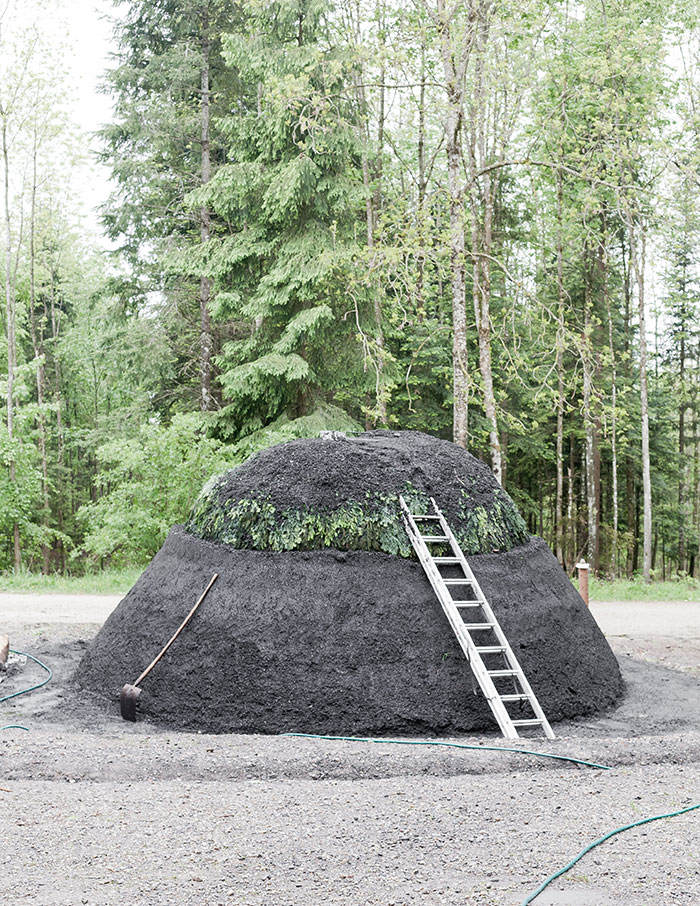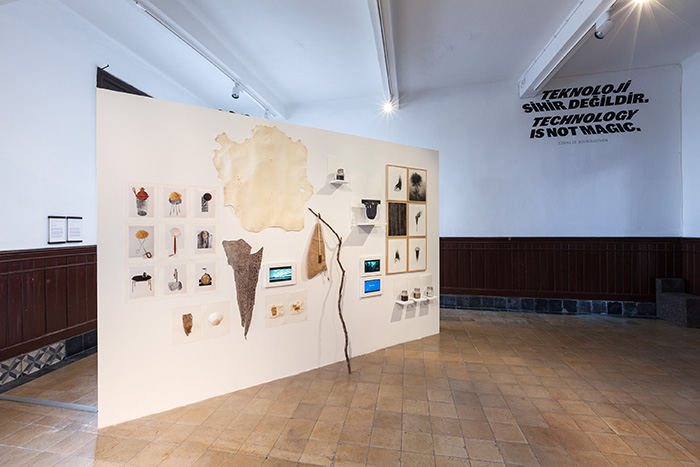
FORMAFANTASMA
Simone Farresin ve Andrea Trimarchi
Doğum yeri: Malo ve Bolzano, İtalya
Merkez: Amsterdam, Hollanda
Manifesto malzemeleri: bitkisel plastik, balık derisi, kömür filtreler, nadir tür kitapları, mimari tezler, malzeme örnekleri, işe yaramaz aletler, nasıl-yapılır videoları
Açık Manifesto, Studio FormaFantasmanın çalışma sürecini sergiliyor. Araştırma temelli yaklaşımları, bitki polimerleri ve balık derileri gibi alternatif malzemelerin incelenmesi yoluyla mevcut zanaat üretimini hızlandıran bir simyacının yaklaşımına benzetiliyor.
Plastik yapımını anlatan videolar ve Hindistandaki plastik geri dönüşümü ile ilgili belgesel çekimlerden, çizimlere, maketlere, aletlere dek, Açık Manifesto, malzemelerin yaşam öykülerini anlatıyor ve stüdyo çalışanları tarafından işleniyor. Enstalasyon, arkeolojik bir kazıyı ya da bir tarih müzesindeki didaktik sunumları hatırlatıyor ve her ikisinden de unsurlar içeriyor.
Tasarımcılar, açık bir manifestoyla, ya benimsenen ya da reddedilen bir niyet ifadesi olarak görülen alışıldık manifesto formatına meydan okuyor. Bunun yerine, tasarım yoluyla bir merak ve sorgulama durumu yaratmanın mümkün olup olamayacağını soran bir manifesto öneriyorlar.
FORMAFANTASMA
Simone Farresin and Andrea Trimarchi
Born: Malo and Bolzano, Italy
Based: Amsterdam, the Netherlands
Manifesto materials: sap-plastic, fish-leather, charcoal filters, rare specimen books, architectural treatises, material samples, obsolete tools, how-to videos
Open Manifesto shows the working process of Studio FormaFantasma. Their researchbased approach has been compared to that of an alchemist, catalyzing existing craft production through the investigation of alternate materials, such as vegetable polymers and fish skins.
From informal videos on how to make plastic and documentary footage of plastic recycling in India, as well as sketches, mockups, and toolstheir Open Manifesto tells the life stories of the materials and processes employed by the studio. The installation resembles the results of an archaeological dig or the didactic display at a historical museum, and borrows elements from both.
As an open manifesto, the designers challenge the usual format of the manifesto as a statement of purpose that can either be embraced or denied, proposing instead a manifesto that asks: Is it possible to create a condition of wondering and questioning through design?



